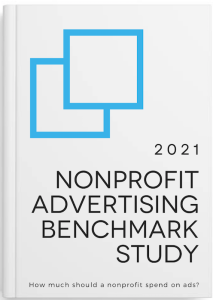Nonprofit executives in charge of generating names for mail campaigns might have been making their jobs harder. Implementing a few merge-purge best practices can open up new quantities of viable prospects — even from in-house lists.
That’s what Save the Children found when it took a hard look at its list practices. The organization had been giving low priority to its house list during its merge-purge activities. As a result, when the service bureau reconciled names from rented or exchanged lists with those on the organization’s own file, Save the Children would count the names on the outside lists as new prospects – and pay for them.
This wasn’t the only flaw in the organization’s merge-purge process. Save the Children had also been using a much larger than necessary suppression file. By adjusting the parameters for what made a name worth suppressing, it reduced the size of the file by more than 1 million names, thereby reducing the processing costs each time it ran the file.
When Elena Consalvo joined Save the Children three years ago, her initial mandate was to bring the acquisition program in-house. As part of this endeavor, Consalvo, who is the organization’s director of direct mail and catalog marketing, sought to correct flaws in the collection of conducting its merge-purge activities.
Consalvo presented her cautionary merge-purge tale during a session at the recent 2014 New York Nonprofit Conference of the Direct Marketing Association’s Nonprofit Federation.
In addition to the missteps listed above, when the organization combined outside lists in preparation for a mailing, it wasn’t proportionally allocating duplicated names among those outside files. As a result, the viability of small external files was skewed. Some of the files should have been considered superfluous due to extremely high levels of duplication but were considered viable lists. Save the Children was essentially paying for names on files that it could get through its larger file rentals, exchanges, or co-ops.
Save the Children had also been overlooking an in-house source of names — those on its suppression file. Note: These are different than those on its do-not-promote file. In the case of the suppression file, the names were those the organization had voluntarily chosen not to solicit.
Save the Children’s suppression file amounted to more than 2.7 million names. Its service bureau at the time was happy to run it against the outside lists, but when Save the Children switched bureaus, the new vendor balked at its size.
This prompted Save the Children fundraisers recently to examine the names on the list. Many of them were 30 years old. “We’re talking probably dead,” said Consalvo, who was aware of the demographics of mail-generated donors.
Consalvo ran the names on the suppression file against “a very large co-op,” a multi-source external file of active consumers. The analysis revealed that the most recent activity from 1.5 million names on the file was more than 20 months old. Additionally, nearly 900,000 names didn’t appear at all on the “very large co-op,” meaning that they most likely hadn’t generated any activity within the past two years, if not longer.
Even more distressing, nearly 300,000 names Save the Children was suppressing were active donors and catalog buyers with other mailers.
Save the Children plans to test an outreach campaign to 17,000 of the most active names in an upcoming mailing. Consalvo believes that if the test is successful, modeling the active names on the suppression file could yield more than 200,000 viable prospects – if names on an in-house list can be called prospects.
She’s also mulling changing the priority order in which mailing lists are deduped. Traditionally, response lists were at the top of the priority, with co-ops and house files following these. This meant that a name appearing in both a response list and a co-op would be attributed to the response list.
In part as a result of this reprioritization, the organization anticipates cutting back on its use of smaller response lists. Co-op files had previously made up between 30 and 40 percent of its mailing quantities. Consalvo expects that level to increase to between 50 and 75 percent per mailing. In addition to not renting as many lists, co-op names also tend to be less expensive than response list names.
That last point is significant: Save the Children’s mail plans call for increasing its potential mailing universe by 1 million names during the next few years. NPT
Richard H. Levey is a New York City-based freelance business writer.











